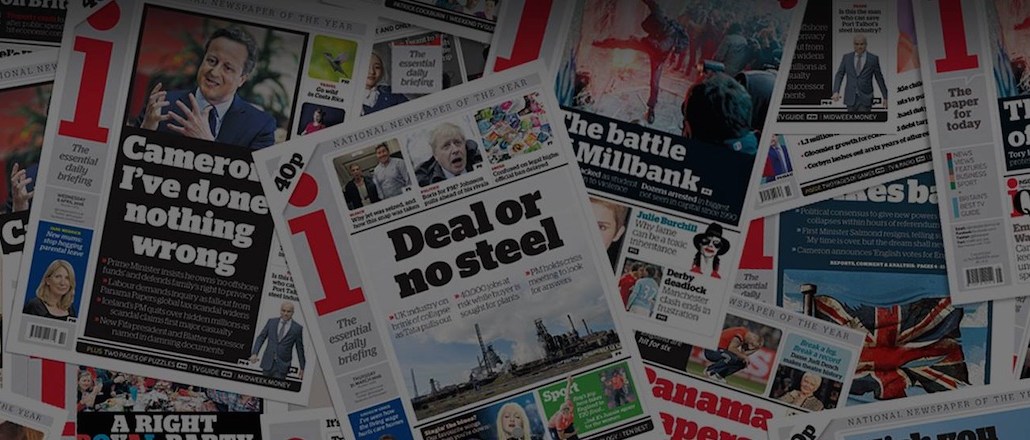
It’s fair to say Johnston Press-owned newspaper i was late to digital. It only launched inews.co.uk in April.
Now, it’s looking to make up for lost time by growing a digital audience while maintaining its existing print circulation, which the company claims continues to be profitable. In adding an online presence, i has needed to get its head around churning out social friendly explainers and figuring out what pops with fickle audiences flitting from shiny bauble to shiny bauble.
For the past eight weeks, the focus has been on getting the tone right. The print audience skews older, on average 53, while online, 35 percent of readers are between 18 and 35 years old. Not all of the content on the paper mirrors the site; stories can be written for online and then repurposed for the paper but not vice versa.
“The reasons we’re so optimistic about i is because it’s a product for this age of hyper information,” said i editor Oliver Duff. “The demands of editing, curating and distilling for readers has never been higher.”
The most popular stories on the site are from its Explainer section, which give the facts of a story, like how likely is it that Turkey will join the EU, and “A very short guide to Ramadan,” keeping true to the punchier tone by delivering just the facts.
“There’s no shame in being populist,” said Duff. “Stories that are written for social sharing are great, but we can’t all race to the bottom and keep throwing stuff to the wall to see what sticks. There’s no future in that for us.”
In print, the Audit Bureau of Circulations figures show the newspaper has increased its circulation by 5 percent to just over 280,000 copies in May. Previously, it didn’t have its own website, so under Johnston’s ownership, it has been growing, although traffic is still low, (600,000 uniques according to internal figures; comScore fits it closer to 160,000).
Before the sale, i had about a dozen edit staff, borrowing occasionally from the Independent’s too. In the last two months, it has boosted this to 50, all of whom work across the print and digital products, including video reporting.
As part of Johnston Press, it can pull on the group’s 1,000 journalists posted across the nation. For instance, the i’s piece on the murder of Jo Cox last week had four bylines, only one of them was from the i’s core edit team, the rest from Johnston’s regional papers like the Yorkshire Post, where the news was happening.
Likewise, around 20 percent of the traffic to i comes from content referrals featured on the homepage of other titles in the Johnston Press network. In fact, the most popular content on i, “41 pubs and bars you need to try,” has come from the Wow247 site, a Johnston Press site akin to Time Out outside of London, with different city sites for Edinburgh, Bristol, Manchester and others.
“For me, the appeal was the idea of working for a media title that could defy some of the doom and gloom around print media,” said Duff. “You can’t be blind to the competition but must be confident about your own strengths, and we are.”
Images: courtesy of i, via Facebook.
More in Media

Digiday+ Research: Publishers take their focus off events as revenue dips
The percentage of publishers making money from events hit a low as of the first quarter of this year and, as a result, fewer publishers plan on putting a focus on growing that part of their business.

What platforms, brands and agencies hope to get out of the Possible conference in year 2
Year two of Possible is once again being held in Miami Beach, and it will take place from April 15-17 with 3,000 attendees expected to listen to another 200 or so speakers, including Snap’s Colleen DeCourcy, Uber Ads’ Megan Ramm and UM Worldwide’s Matthew Smith.

AI Briefing: Cloud giants’ AI ambitions create new partnerships — and new competitive concerns
Last week, tech companies like Google, Microsoft and Amazon all announced updates more updates for their cloud and AI efforts





